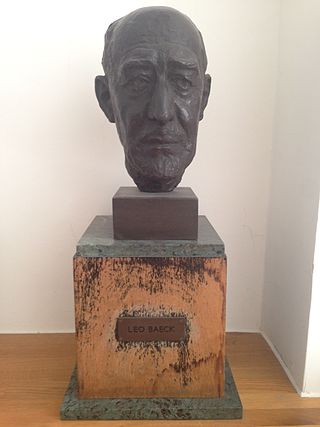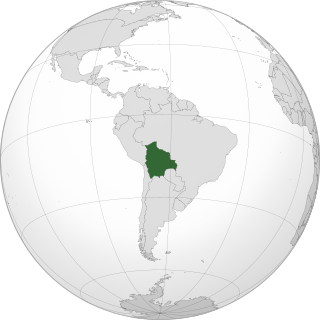
Hannah Arendt was a German-American historian and philosopher. She was one of the most influential political theorists of the 20th century.

The Forward, formerly known as The Jewish Daily Forward, is an American news media organization for a Jewish American audience. Founded in 1897 as a Yiddish-language daily socialist newspaper, The New York Times reported that Seth Lipsky "started an English-language offshoot of the Yiddish-language newspaper" as a weekly newspaper in 1990.

Leo Baeck was a 20th-century German rabbi, scholar, and theologian. He served as leader of Reform Judaism in his native country and internationally, and later represented all German Jews during the Nazi era. After the Second World War, he settled in London, in the United Kingdom, where he served as the chairman of the World Union for Progressive Judaism. In 1955, the Leo Baeck Institute for the study of the history and culture of German-speaking Jewry was established, and Baeck was its first international president. The Leo Baeck Medal has been awarded since 1978 to those who have helped preserve the spirit of German-speaking Jewry in culture, academia, politics, and philanthropy.

Samuel Abraham Goudsmit was a Dutch-American physicist famous for jointly proposing the concept of electron spin with George Eugene Uhlenbeck in 1925.
The Sternberg Centre for Judaism, in East End Road, Finchley, London, is a campus hosting a number of Jewish institutions, built around the 18th-century Finchley manor house.

The Oregon Spectator, was a newspaper published from 1846 to 1855 in Oregon City of what was first the Oregon Country and later the Oregon Territory of the United States. The Spectator was the first American newspaper west of the Rocky Mountains and was the main paper of the region used by politicians for public debate of the leading topics of the day. The paper's motto was Westward the Star of Empire takes its way.
Eva Gabriele Reichmann was an eminent German historian and sociologist. From 1945 on she conducted research on anti-Semitism. Reichmann was Jewish.

Ludwig Philippson was a German rabbi and author.
The Haavara Agreement was an agreement between Nazi Germany and Zionist German Jews signed on 25 August 1933. The agreement was finalized after three months of talks by the Zionist Federation of Germany, the Anglo-Palestine Bank and the economic authorities of Nazi Germany. It was a major factor in making possible the migration of approximately 60,000 German Jews to Palestine between 1933 and 1939.

The Leo Baeck Institute, established in 1955, is an international research institute with centres in New York City, London, Jerusalem and Berlin, that are devoted to the study of the history and culture of German-speaking Jewry. The institute was founded in 1955 by a consortium of influential Jewish scholars including Hannah Arendt, Martin Buber and Gershom Scholem. The Leo Baeck Medal has been awarded since 1978 to those who have helped preserve the spirit of German-speaking Jewry in culture, academia, politics, and philanthropy.

Rachel Bernstein Wischnitzer, was a Russian-born architect and art historian.
Manfred George, born Manfred Georg Cohn, later shortened to Manfred Georg, was a German journalist, author and translator. He left Germany after the Nazis came to power, living in several different European countries and eventually emigrating penniless to the United States in 1939. He became the editor of Aufbau, a periodical published in German, and transformed it from a small monthly newsletter into an important weekly newspaper, especially during World War II and the postwar era, when it became an important source of information for Jews trying to establish new lives and for Nazi concentration camp survivors to find each other. George remained Editor in Chief of Aufbau until his death.
During the nine decades since its establishment in 1919, the Communist Party USA produced or inspired a vast array of newspapers and magazines in at least 25 different languages. This list of the Non-English press of the Communist Party USA provides basic information on each title, along with links to pages dealing with specific publications in greater depth.

The history of the Jews in Bolivia goes back to the colonial period of Bolivia in the 16th century. In the 19th century, Jewish merchants came to Bolivia, most of them taking local women as wives and founding families that merged into the mainstream Catholic society. This was often the case in the eastern regions of Santa Cruz, Tarija, Beni and Pando, where these merchants came either from Brazil or Argentina.
The Shanghai Jewish Chronicle was a Jewish newspaper operating in Shanghai, China. It was a German language newspaper that was originally published daily and later published weekly.

The Leo Baeck Institute New York (LBI) is a research institute in New York City dedicated to the study of German-Jewish history and culture, founded in 1955. It is one of three independent research centers founded by a group of German-speaking Jewish émigrés at a conference in Jerusalem in 1955. The other Leo Baeck institutes are Leo Baeck Institute Jerusalem and Leo Baeck Institute London, and the activities of all three are coordinated by the board of directors of the Leo Baeck Institute. It is also a founding partner of the Center for Jewish History, and maintains a research library and archive in New York City that contains a significant collection of source material relating to the history of German-speaking Jewry, from its origins to the Holocaust, and continuing to the present day. The Leo Baeck Medal has been awarded by the institute since 1978 to those who have helped preserve the spirit of German-speaking Jewry in culture, academia, politics, and philanthropy.
Margarete Kollisch was an Austrian writer and poet who fled from the Nazis and continued her artistic creation in the United States.
The Leo Baeck Institute London is a research institute dedicated to the study of German-Jewish history, politics and culture, founded in 1955. It belongs to the international Leo Baeck Institute with further research centres in New York City, Berlin and Jerusalem.
Lessie Sachs (1897–1942) was a German-born American poet and artist who was active during World War I and World War II.
Aufbau is a term which was used in publications from 1919 to 1947 in the German language. The term can be translated as "structure", "construction" or as "rebuilding", "reconstruction". Peter Galison advocated its use as a "keyword", in the sense used by Raymond Williams in Keywords: A Vocabulary of Culture and Society.










